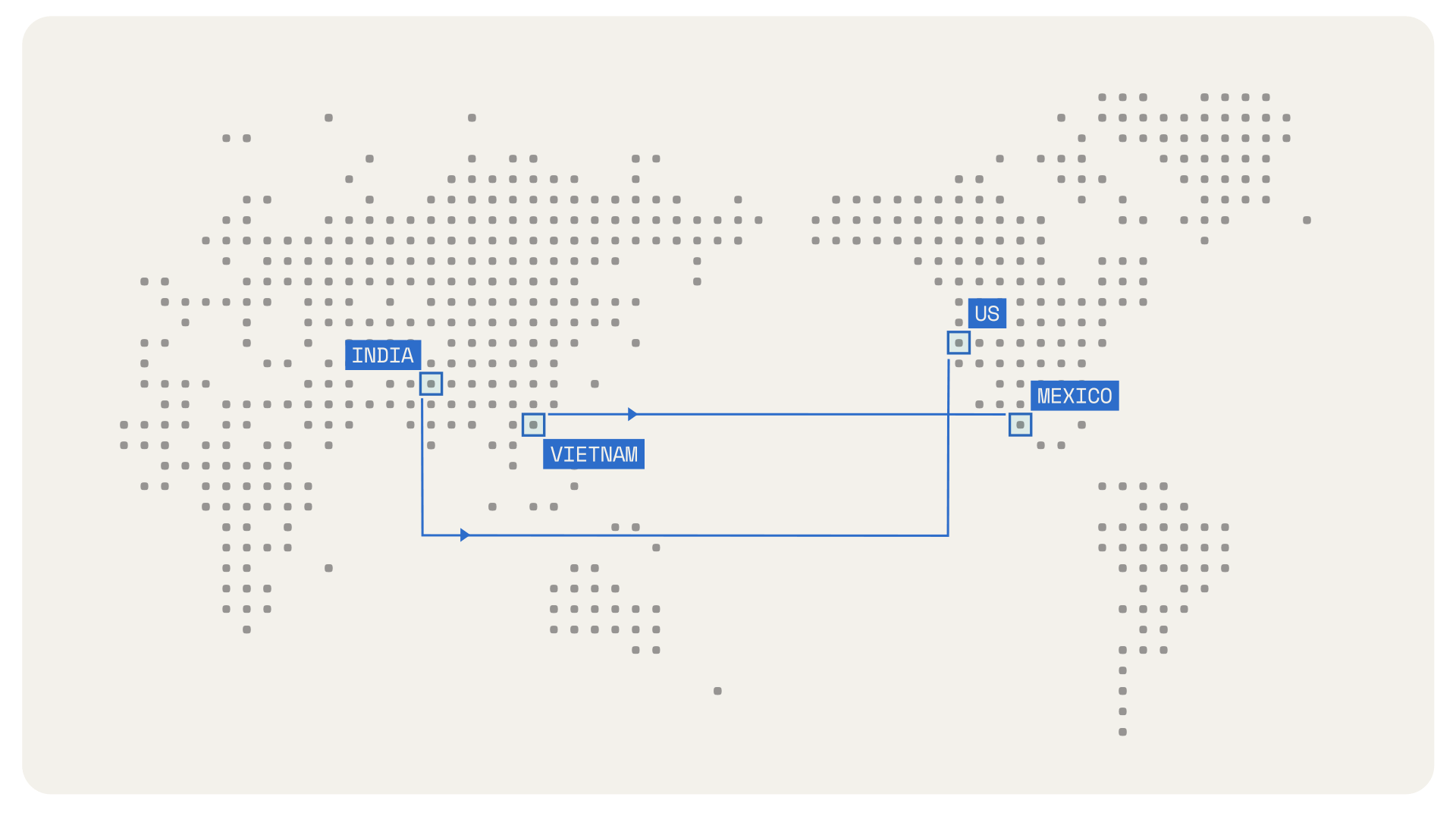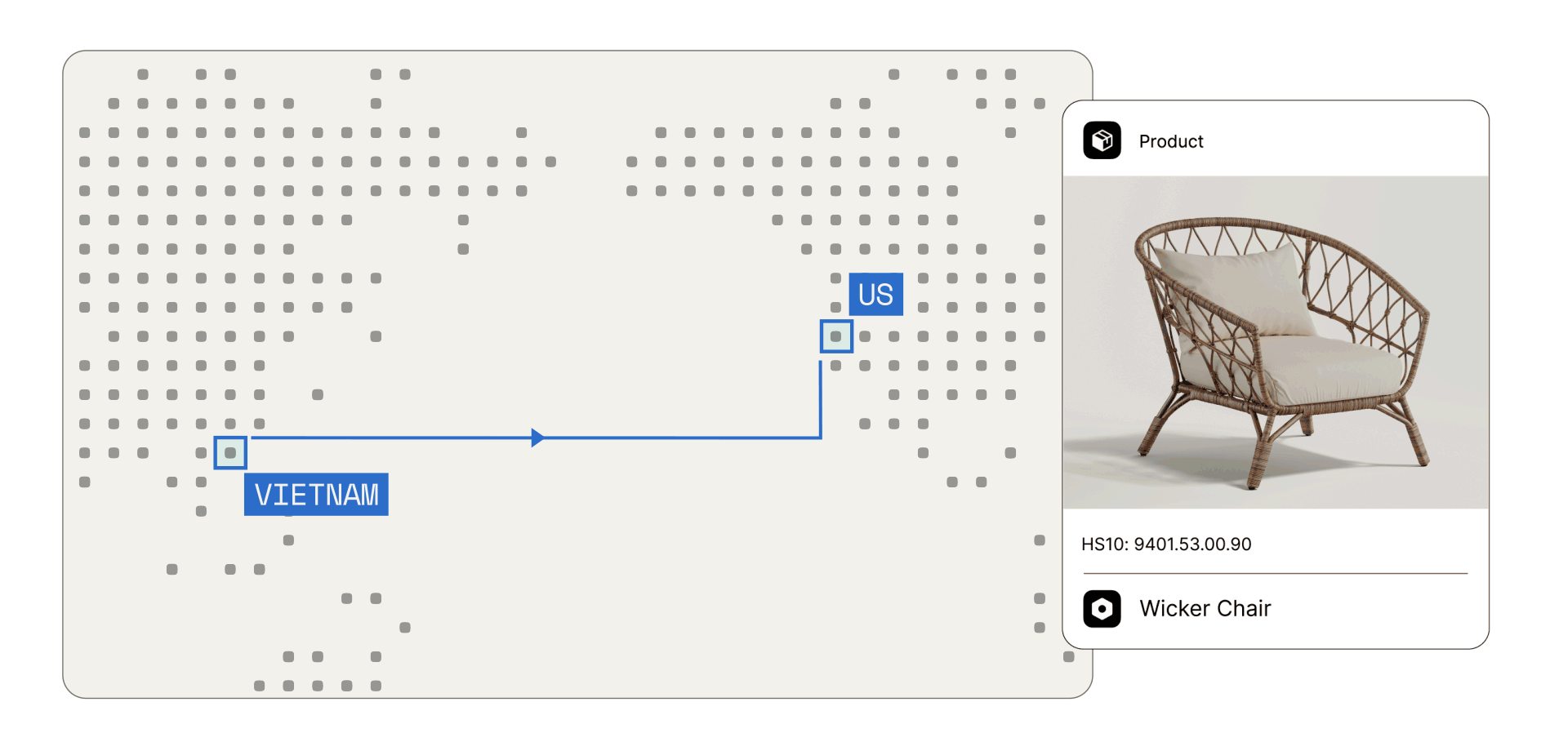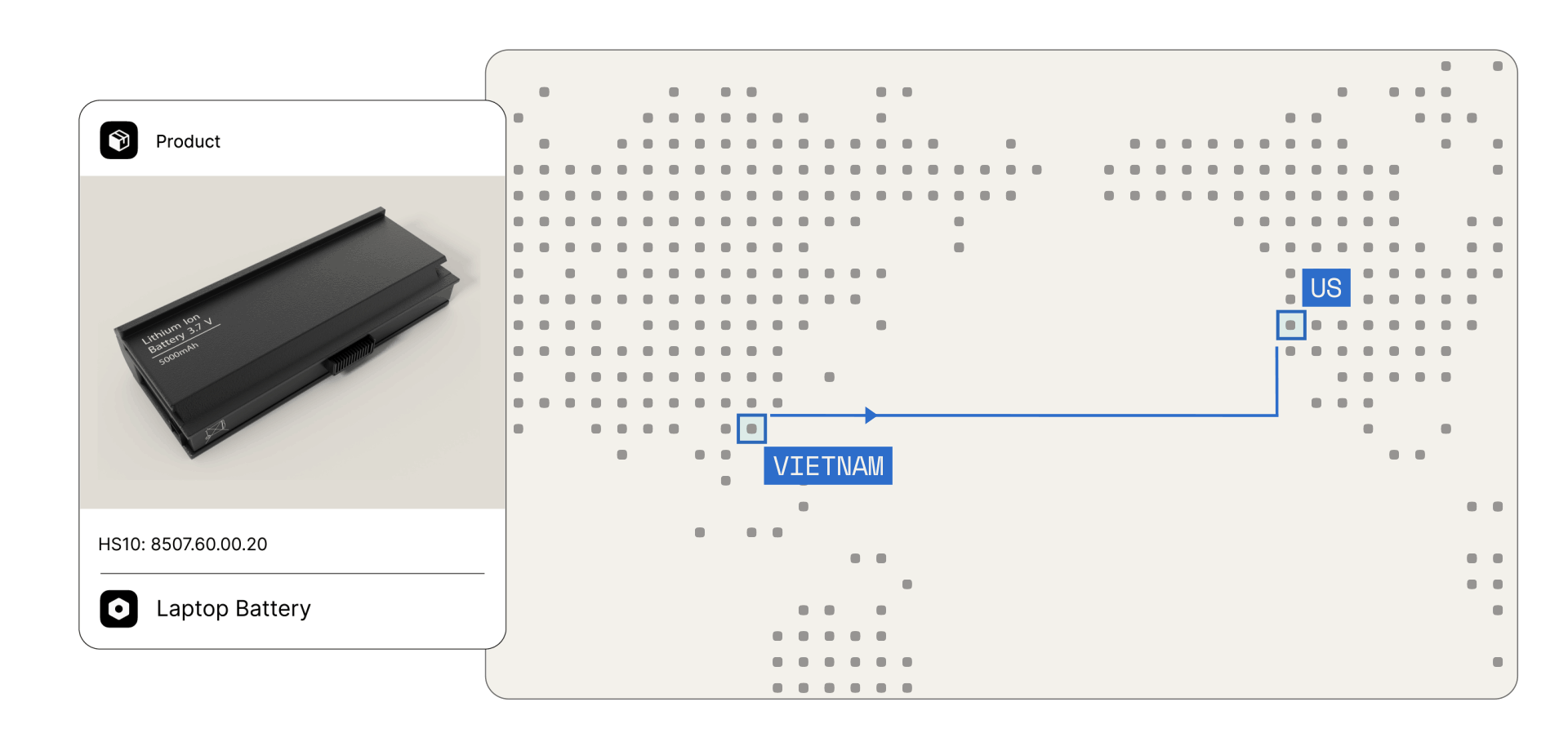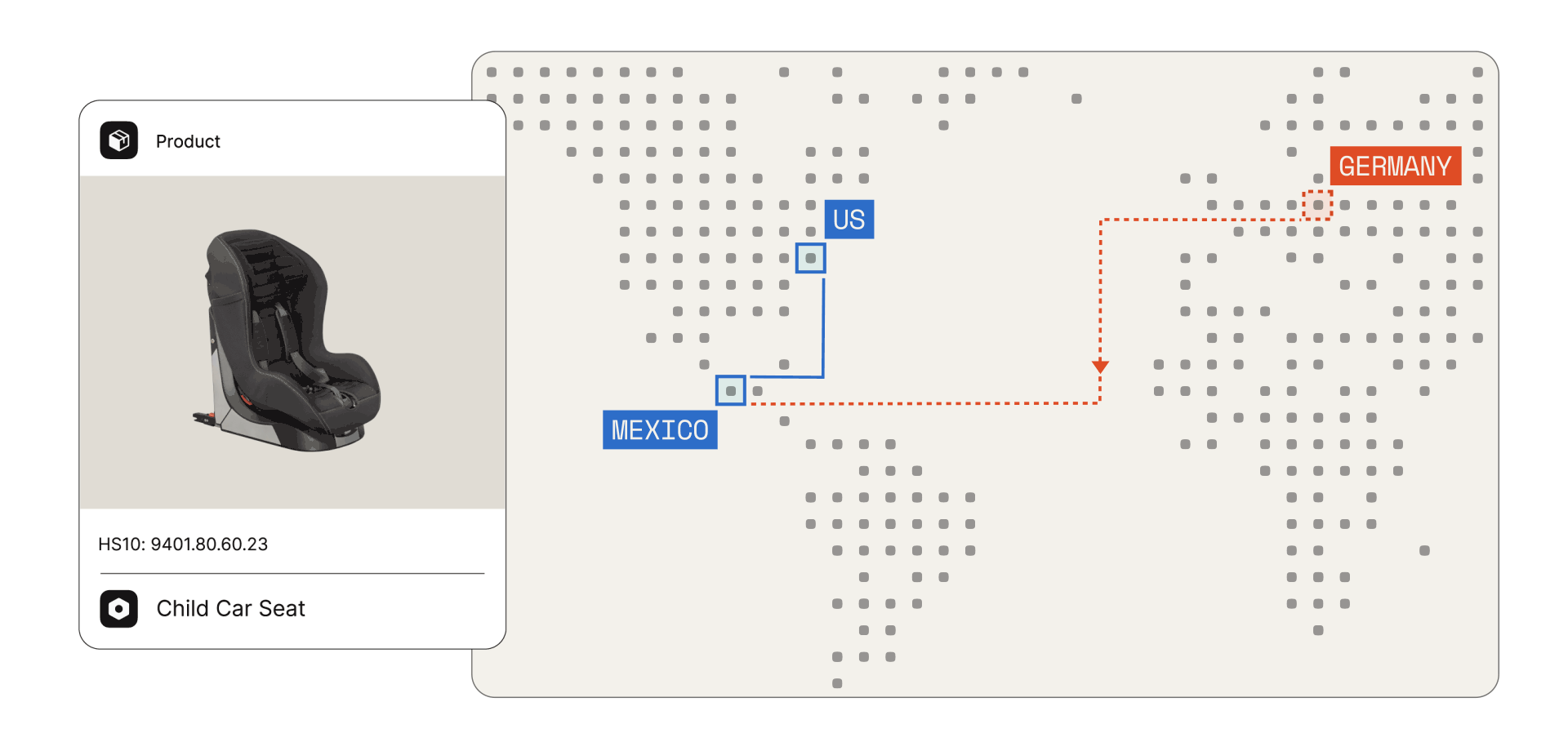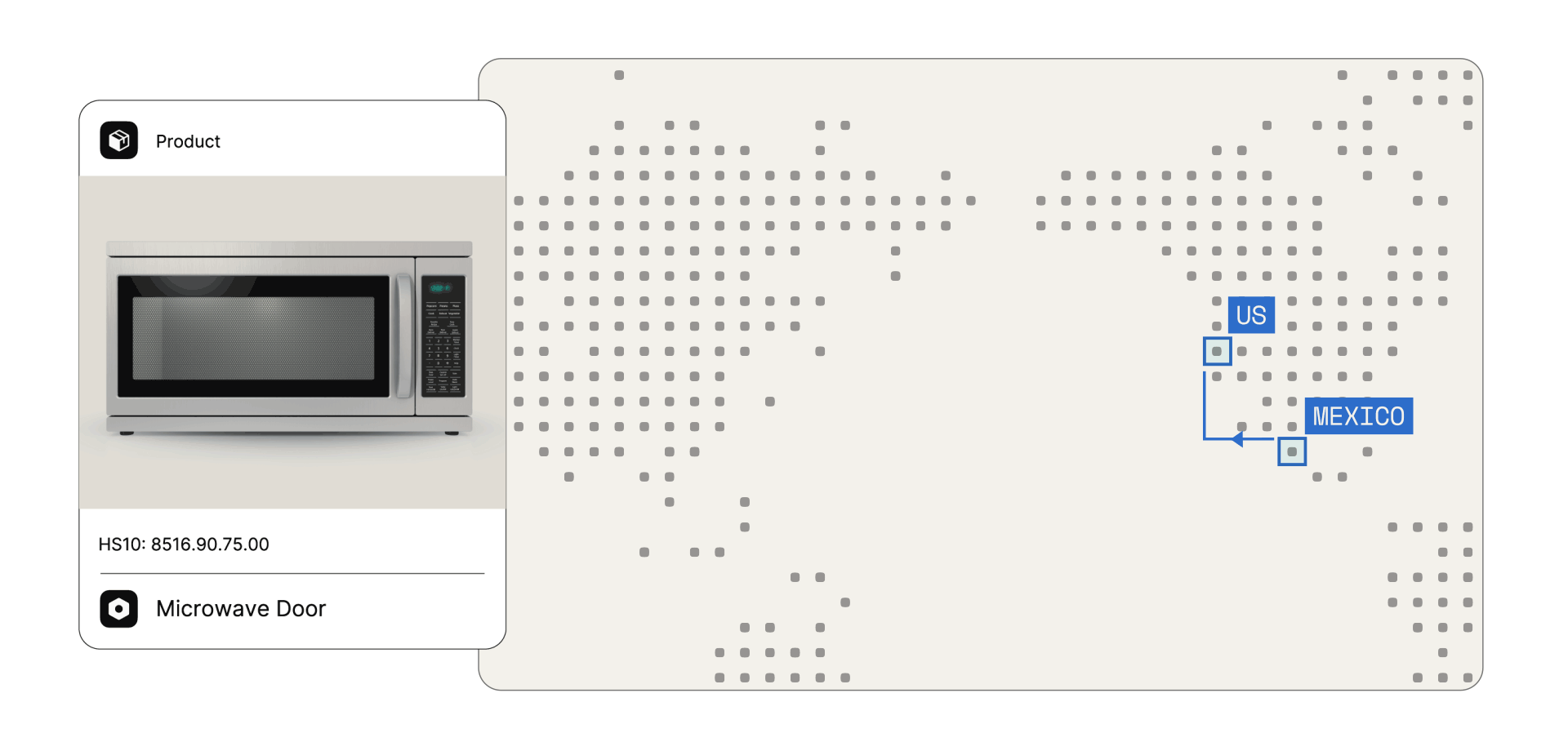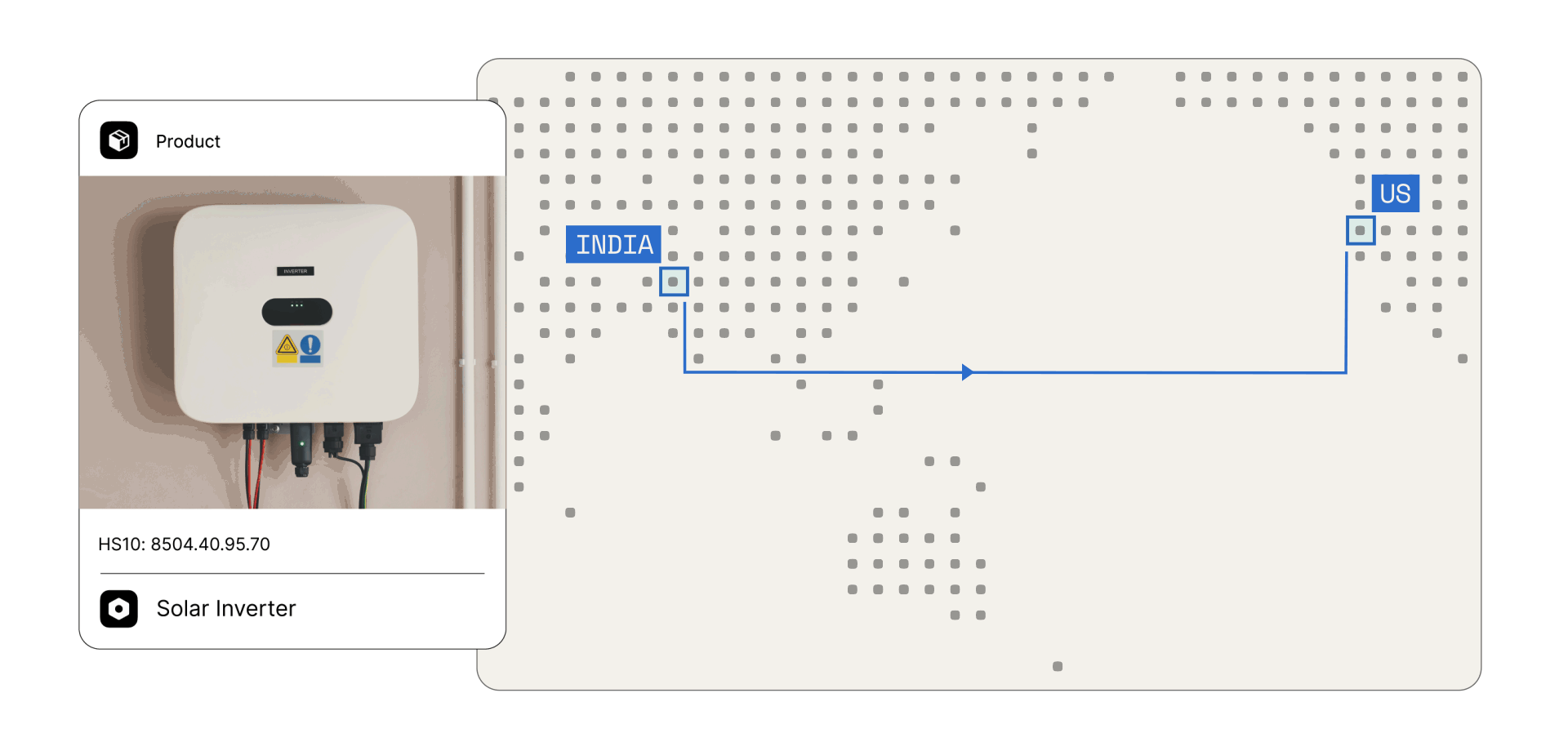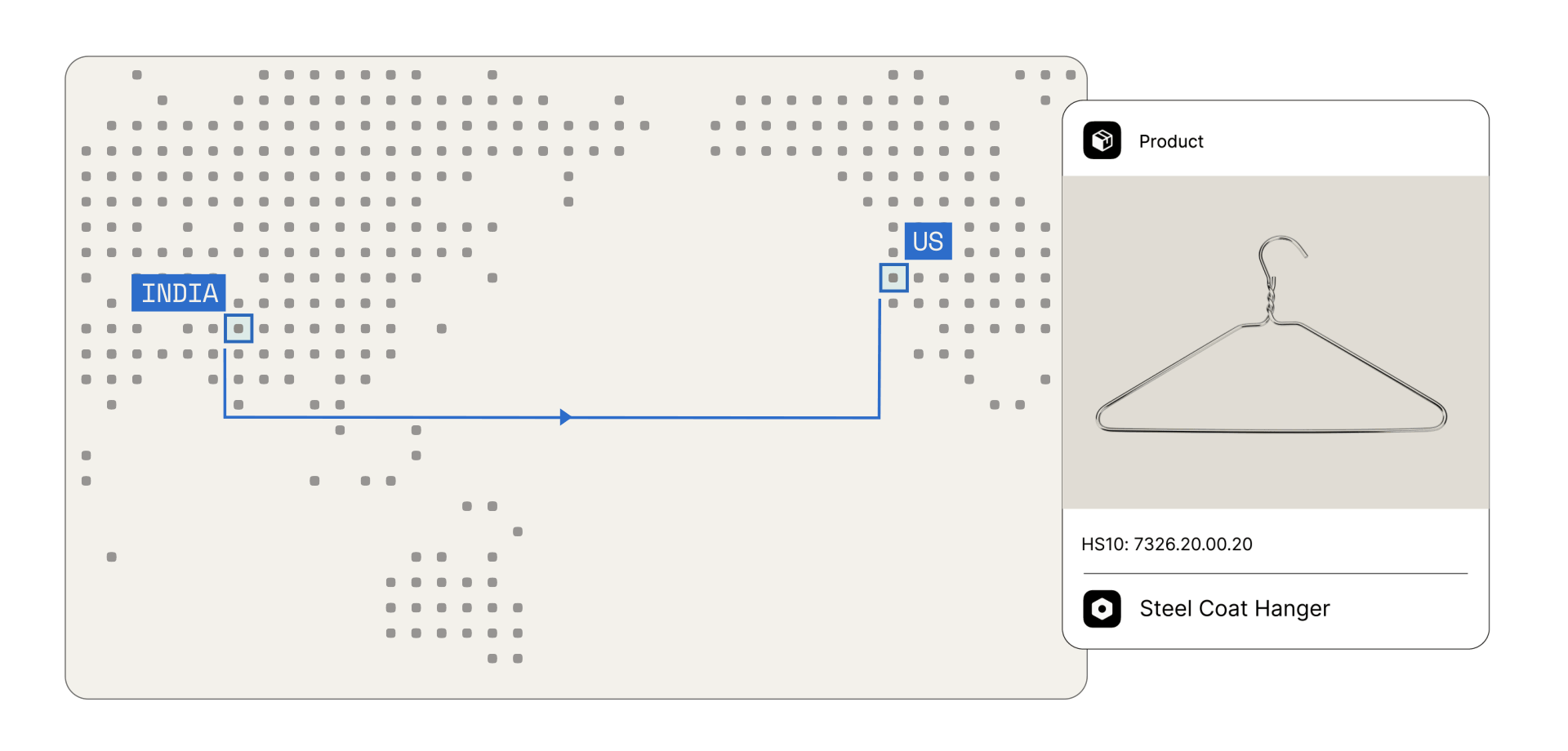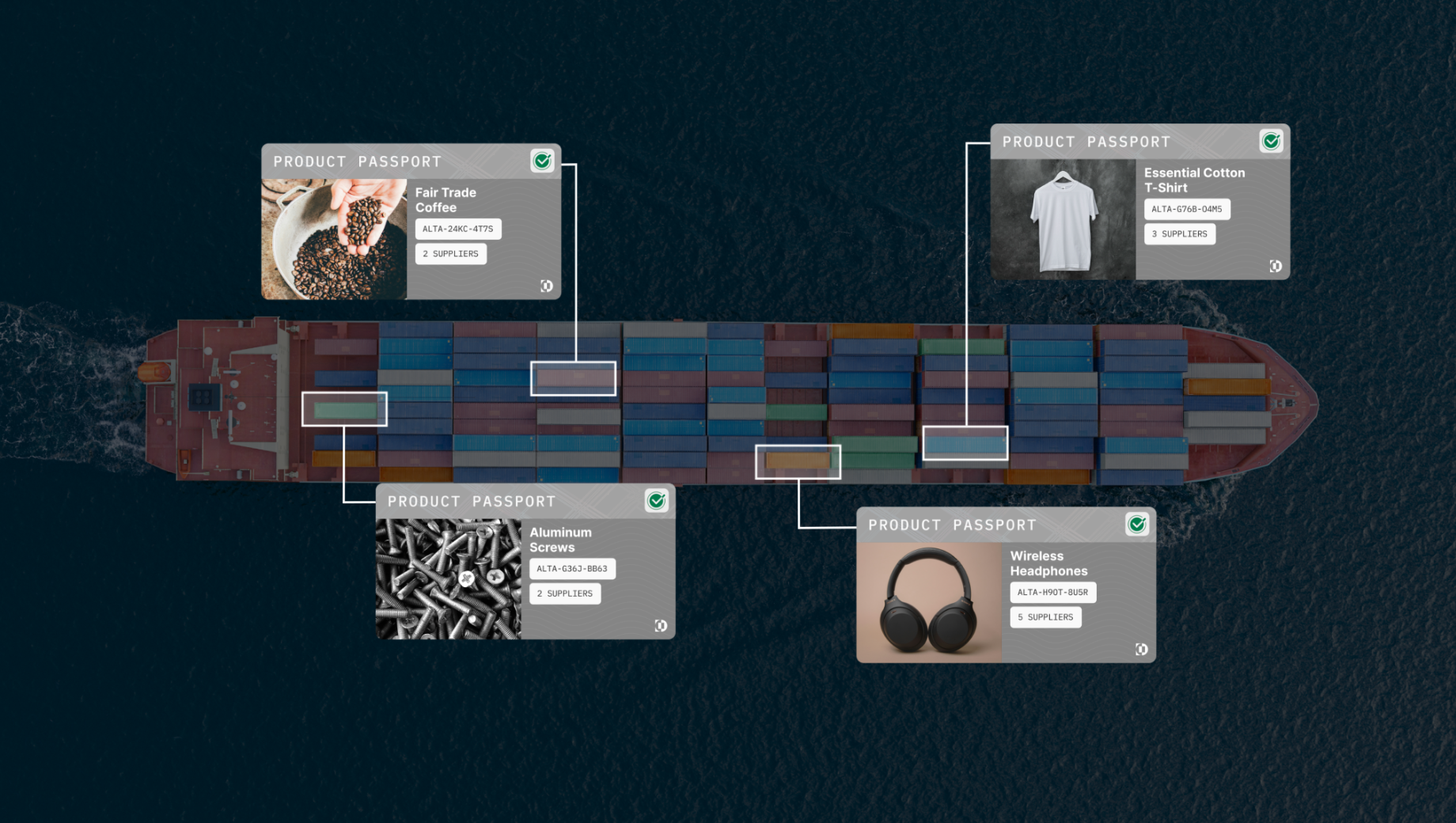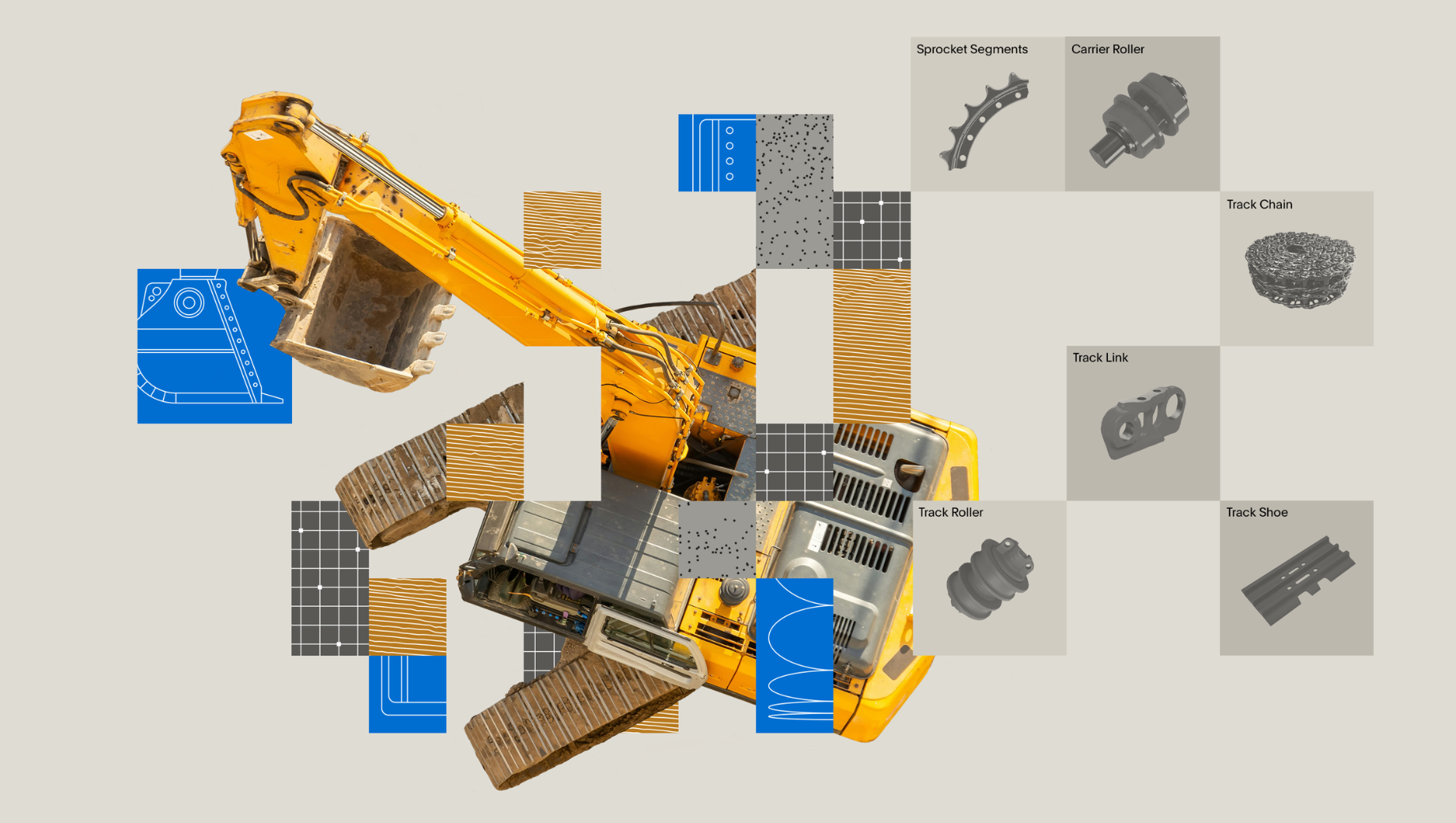As regulatory scrutiny intensifies around country of origin claims and how products are sourced, manufactured, and moved, an Altana analysis reveals patterns of non-transformation that could cause compliance violations and border delays and detentions.
Global businesses face growing pressure to verify country of origin claims, but may not recognize the extent of their own rerouting vulnerabilities, according to analysis from Altana’s product network, which is built on the world’s largest, most accurate picture of the global supply chain.
Altana’s illumination of product value chains reveals substantial U.S.-bound trade in which goods are rerouted through major shipping hubs with limited or nonexistent transformation. Certain product lines, from wicker furniture to steel wire hangers, are more likely to move through trade hubs without undergoing the kind of transformation that justifies a change in country of origin.
CBP has intensified targeting operations, increased supply chain audits, and leveraged its Enforce and Protect Act (EAPA) authority to investigate evasion schemes. CBP continues to work closely with domestic and international partners to identify, disrupt, and penalize illicit transshipment operations.

U.S. Customs and Border Protection, Customs Trade Partnership Against Terrorism, Illegal Transshipping Alert, July 2025
The movement of goods through third countries is not inherently illegal or deceptive, but patterns of non-transformation do surface regulatory risks. And the possible exposure to non-transformation uncovered by Altana comes at a time of heightened consequences for ambiguous product origin, and general pressure on businesses to know and manage activity far upstream in supply chains. More than 18,000 companies were exposed to the most recent additions to the UFLPA Entity List; over 10 million yearly transactions fell under new or expanded Section 232 component-based tariffs on steel, aluminum, and upstream materials; and more than 250,000 yearly U.S. defense industrial base imports include upstream exposure to Chinese military entities that will violate the National Defense Authorization Act, starting in 2027.
Patterns of non-transformation present in major U.S.-bound trade lanes
Allegations of rerouting, transshipment, and non-transformation often carry associations of jurisdictions in which assembly hubs, tariff avoidance, and trade laundering have been discovered in the past.
Altana’s product-level analysis confirmed patterns of non-transformation in these jurisdictions, but found more country of origin ambiguity in goods that pass through countries with strong U.S. trade ties — namely, Vietnam, Mexico, and India.
Certain product lines within these trade lanes show elevated patterns of non-transformation, with goods from China and other countries hopping into a third country, undergoing limited change, and then being sent to the U.S. at a lower tariff rate.
While not always indicating fraud, this non-transformation does signal a compliance risk for importers. Vast, opaque networks of hundreds of facilities and thousands of products and hundreds of thousands of shipments complicate validating country of origin — even when the final shipment comes from well-established, friendly trade lanes.
Vietnam to U.S.: Chinese goods from furniture to high-tech electronics
The broad range of products exhibiting those patterns reflect the country’s role in the U.S. supply chain: Articles of plastics, iron and steel, furniture, and advanced electronics all passed from China to Vietnam to the U.S. and were labeled as Vietnamese origin without undergoing significant transformation.
Two products in particular demonstrate the pattern of non-transformation:
Wicker furniture, such as chairs, coffee tables, and lampshades, is heavily produced and exported by both Vietnam and China. Altana’s analysis indicates that some U.S.-bound wicker furniture labeled as Vietnamese may have last been meaningfully transformed in China.
Vietnamese production of battery chargers, including for advanced electronics and electric vehicles, has surged in recent years, as manufacturers diversify supply chains. This surge in Vietnamese battery production is paired with elevated patterns in Altana’s product network of disconnect between declared country of origin and location of last meaningful transformation, as Chinese batteries are passing through Vietnam and exiting with light repackaging.
Mexico to U.S.: Auto parts, home appliance components from outside North America
The Mexico-U.S. trade lane is one of the world’s most integrated bilateral relationships, with the USMCA agreement resulting in a generally free-trade zone between Mexico, the U.S., and Canada.
But within this free trade zone, Altana’s analysis revealed potential non-transformation of goods from outside North America that pass through Mexico en route to the U.S.
Mexico’s well-developed automotive and home appliance manufacturing sectors are vital for U.S. supply chains. They also register elevated patterns of non-transformation.
Two goods illustrate the compliance risk: Car seats and other auto parts manufactured in Germany that pass through Mexico on their way to the U.S. and are marked as Mexican-origin, sometimes without signs of activity that would justify that attestation.
Microwave ovens and their parts show a similar pattern of non-transformation. Shipped from China, they are routed through Mexico to the U.S. with little sign of the substantial transformation that would qualify them for USMCA privileges.
India to U.S.: Electronics components, iron and steel derivatives from elsewhere in Asia
India’s growing electronics manufacturing sector is the source of substantial U.S.-bound trade, and also the source of elevated non-transformation of certain goods. Among them: inverters and transformers — used in power supplies for solar power systems, consumer electronics, industrial equipment, electric vehicles, and more — originate in Thailand and other Asian countries, pass into India, and are tagged with Indian country of origin, despite indications of non-transformation.
This non-transformation could be tied to tariffs. U.S. electronics imports from southeast Asian countries now carry higher levies, as anti-dumping/countervailing duties investigations found that Chinese companies used southeast Asia to avoid higher tariffs on shipments from China.
Streamline traceability and clear customs fast
Despite significant trade volume in which goods are rerouted through major shipping hubs with limited or nonexistent transformation, enterprise businesses are stuck with static, limited, manual country of origin and traceability exercises. The result is significant strategic risks, including the possibility of unexpected border seizures and delays that can add up to millions of dollars in penalties. With Altana, businesses access through visibility, traceability, and collaboration an entirely new, faster, more accurate way of validating country of origin claims and reducing the risk of enforcement:
- Visibility means getting an instant, dynamic map of N-tier relationships at a product level. AI reveals specific multi-tier product value chain connections and uncovers relationships and risks, such as suppliers and facilities with behaviors of non-transformation.
- Traceability means working with suppliers to get detailed data and documentation on a product’s lifecycle, enabling in the click of a button the validation of country of origin claims based on actual, recorded transformation or non-transformation.
- Collaboration means working with verified suppliers and government agencies and regulators to clear borders faster. Altana Product Passports can be used to collaborate with upstream and downstream supply chain partners to prove country of origin, and work directly with regulators to pre-validate shipments and accelerate border clearance.
